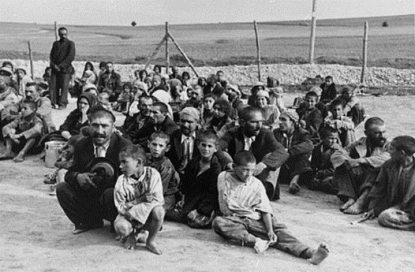Relations between the state and its citizens between the two world wars are the guiding theme of the exhibit, called From Rights Abuse to Genocide: Remembering Hungarian Holocaust Victims, according to Hungarian National Museum historian Judit Molnár, who was appointed head of the office in charge of planning the exhibit a year and a half ago.
The exhibit focuses on five phases: disfranchisement, despoliation, loss of liberty, loss of human dignity and loss of life. It also touches on liberation and indictment. The exhibit begins in an underground space where the stories of five families are presented. Lines representing their individual lives run across the glass walls, but gradually stop, illustrating the fate of the individuals.
The synagogue at the Holocaust Memorial Centre has been turned into a space for remembering and bereavement. Those who saved lives are presented next to those who were murdered. The destroyed synagogues illustrate the communities that vanished, and portraits on transparent glass benches illustrate the void left behind by those murdered.
There will be no entrance fee for the exhibit at the start, but one could be introduced for adults later on, Székely said. The exhibit will, however, remain free of charge for children. Mr Székely said the goal is to see that no child goes through Hungary?s education system without visiting the memorial centre at least once.
Audio guides for the exhibit will be available in several languages, and brochures will be available in Hungarian, English and Hebrew.
The memorial centre was opened 15 April 2004, and has housed a number of temporary exhibits since. The centre is located at Páva u. 39, in Budapest?s District IX, just a short walk from the Ferenc körút metro station on the blue line.

